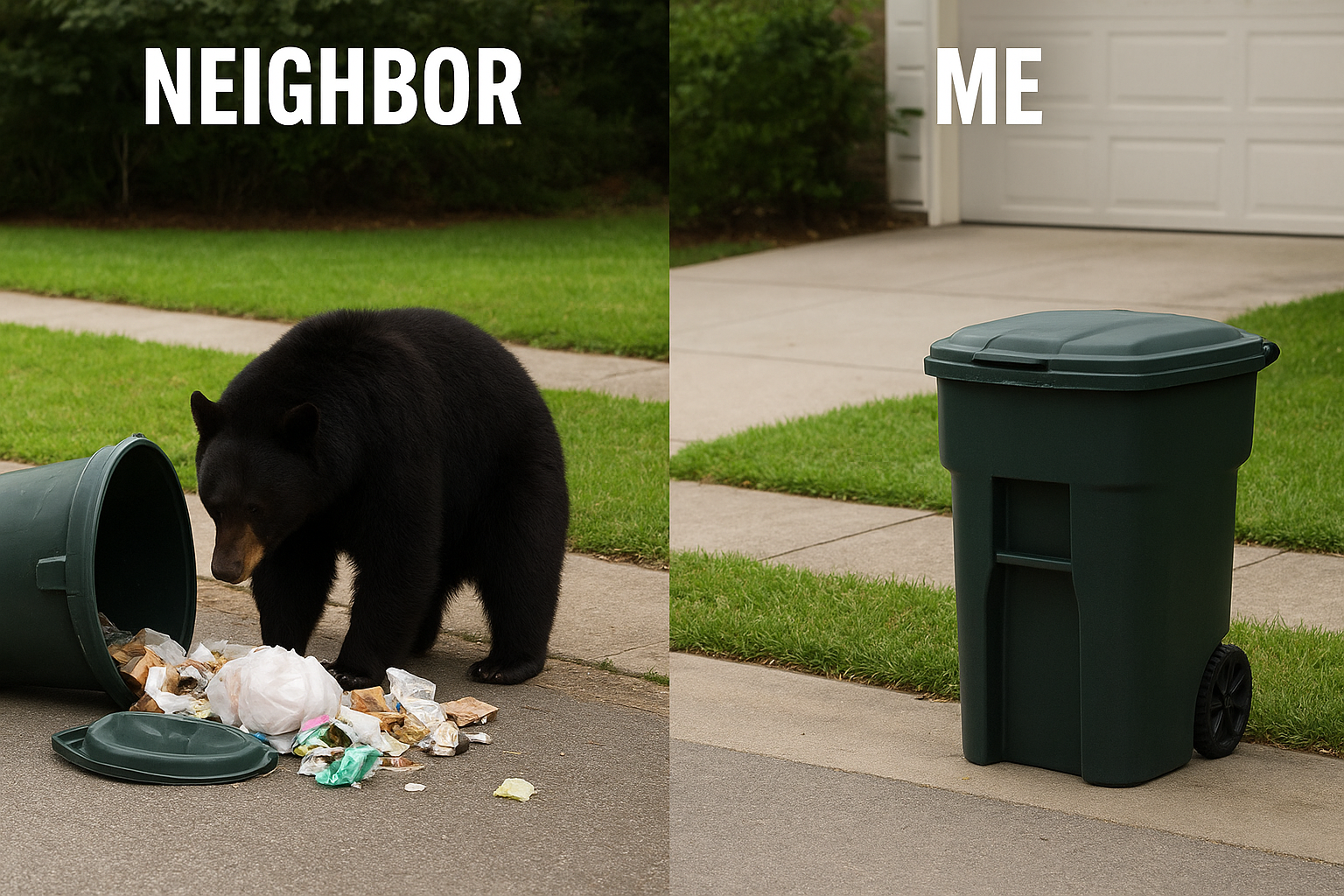First Bear Encounter
Marshall and Raven were around five months old—too young for this kind of situation. Just before bed, my wife mentioned, “They’ve been barking.” At the same time, I heard their barks, which sounded unusually insistent. I thought, “This might be real.” So, I grabbed my flashlight from by the door and went to investigate.
The dogs were just inside the edge of the woods. As I slowly approached, I heard a strange clacking noise, like footsteps on an old metal roof lying on the ground. But there’s no metal roofing in those woods. I stopped and listened carefully. The noise was coming from above—in a tree.
What could it be? Could a bear make that sound? I wasn’t very experienced with bear behavior when they’re treed by dogs. I pointed my flashlight upward and found the animal. Suddenly, I realized I was seriously underdressed for this encounter. Yes, it was a bear making that clacking noise by chomping its teeth together.
“Come!” I called to the dogs. Not a chance. Eventually, Raven came over to check on me, so I grabbed her by the collar and secured her in the pen before going back for Marshall.
The bear had come down to about six feet off the ground, leaning over Marshall, who was standing up with his front feet against the tree. I was surprise to find this configuration because there was no added distress in his barking, even though they were almost touching. “Marshall!” Not a chance. I was mostly just telling the bear whose side I was on. Interestingly, the barking never turned into aggressive snarls—Marshall stayed reasonably calm, just barking firmly, much like he had when the bear was higher up in the tree.
I can’t help but consider how underdressed I remained at the moment. Thankfully, the bear decides he doesn’t want to tangle with the dog and me, in my pajamas, so he heads back up the tree. I make a flanking maneuver to get around some underbrush to get to Marshall under the tree. As I get into the woods and half way around the tree, I hear the same clacking noise, but on the ground and maybe 30 yards further back in the woods. Without missing a step, I turn a 180 and head back to where I belonged. It must have been a second bear that was outside the dog’s wireless boundary. Now what am I going to do? It’s starting to get serious.
Just then, Marshall comes to check on me. What a good dog! I grab his collar and off we go to the pen. What a relief!
The next day, late morning, Grandma sees Raven chasing a juvenile bear across the field. I guess this is going to be business as usual.
Before I had Colorado Mountain Dogs, I lost beehives to bears. Installing an electric fence helped reduce these losses, but they still occurred on occasion. The trash bin would be raided regularly every month or two. Since the arrival of these dogs on my property, this has never happened. No, not once.
Are bears still present? Absolutely. I often smile when I see trash scattered in someone else’s yard as I leave for work in the morning. (I’m happy for myself, of course.) Bear tracks appear on the dirt road. My neighbor can’t keep pigs because they have been eaten by bears—twice. I have pulled the dogs out from under a bear in a tree a few more times — These appear to be new bears that Marshall and Raven are training to stay away from our property. I sleep well at night, knowing I have multiple dogs on duty.
